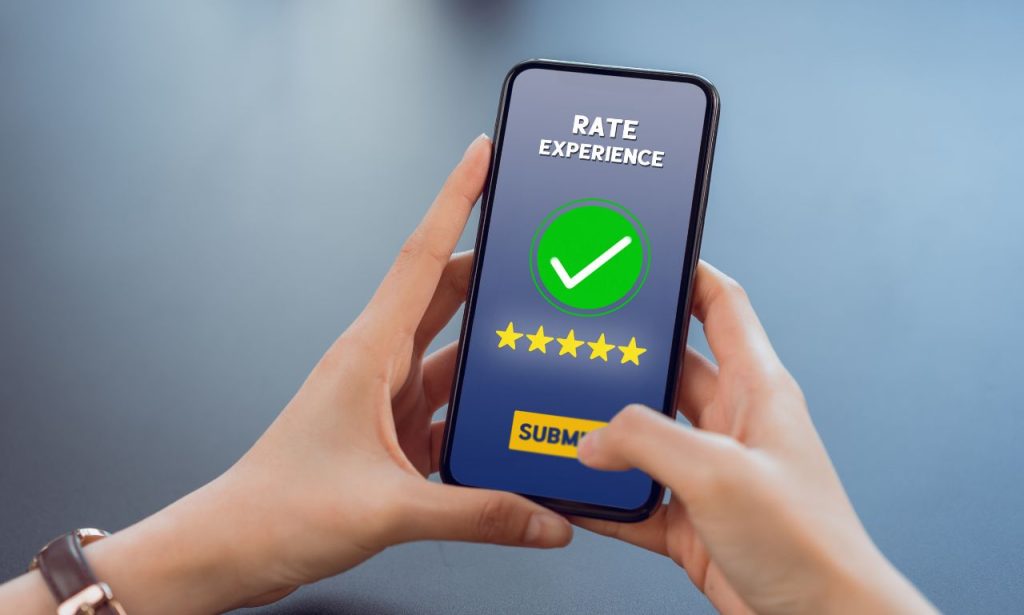Ever wonder why some B2B companies thrive while others barely survive? The secret often lies in customer experience. I’ve spent years analyzing what separates successful B2B businesses from the rest, and it always comes back to how they treat their customers.
Today, I will share the 9 most powerful customer experience ideas from Do B2B Better, the landmark conference where industry leaders like Jim Tincher shared battle-tested strategies. Let’s dive into these game-changing ideas that will help you stand out in the crowded B2B marketplace.
Motivate and Reward Customers
Smart B2B companies are implementing strategic reward programs beyond the typical discount. They’re creating exclusive communities where customers can connect, learn, and grow. This approach builds a sense of belonging that’s hard for competitors to replicate.
For example, Oregon Tool created a “Champions Club” for their most engaged customers. Members get early access to new products, direct lines to product developers, and invitations to special events. This program has increased customer retention by 27% and boosted cross-selling opportunities.
The key is to design rewards that address your customers’ needs and pain points. Don’t just throw generic perks at them—understand what would make their jobs easier or help them succeed. Your rewards should solve real problems. When you allow your customers to look good to their bosses, they’ll stick with you for the long haul.
Use AI Chatbots

According to the 2024 State of Customer Service Report, B2B companies using AI-powered chatbots see a 35% increase in contact resolution rates and a 42% reduction in response times.
These aren’t the clunky bots of yesterday. Today’s AI solutions can handle complex queries, recognize customer emotions, and seamlessly transfer to human agents when necessary. They’re available 24/7, providing immediate answers when your customers need them most.
Take Bosch Power Tools as an example. Their chatbot handles over 70% of initial customer inquiries, freeing up their customer service team to focus on more complex issues. The result? Their customer satisfaction scores have jumped by 18% while reducing support costs.
The best part is that these chatbots get smarter over time. They learn from each interaction, continuously improving their responses. This means your customer service automatically gets better, creating a constantly improving experience that customers notice and appreciate.
Personalise Experiences
Today’s B2B buyers expect experiences tailored to their specific needs, industry challenges, and stages in the customer journey.
Effective personalization starts with solid data. You must track and analyze customer behaviors, preferences, and pain points across all touchpoints. This information becomes the foundation for creating targeted experiences that resonate with each segment of your customer base.
Consider how Bosch Tools revolutionized their approach. By analyzing customer data, they identified distinct user personas with unique needs. They then created customized product recommendations, content, and support resources for each group. Their digital platform now adapts in real-time based on the customer’s industry, past purchases, and browsing behavior.
The results speak for themselves: personalized experiences led to a 24% increase in repeat purchases and a 31% boost in average order value. Your customers don’t want to wade through irrelevant information—they want experiences explicitly designed for them.
Show your Dependability
Your customers must know they can count on you, especially when problems arise. Reliability isn’t just about delivering on promises—it’s about how you handle the inevitable challenges.
Consistency builds trust over time. This means maintaining quality standards across all touchpoints, from your website to your customer service team to your product delivery. Every interaction should reinforce your reliability.
For instance, when a commercial paper company faced supply chain disruptions that threatened delivery schedules, it immediately notified affected customers, provided detailed contingency plans, and offered temporary alternatives. Instead of losing customers, it strengthened relationships by demonstrating its commitment to transparency and problem-solving.
Educate and Advise Your Customers
The most successful B2B companies position themselves as trusted advisors, not just vendors. They understand that providing value beyond their products creates deeper, more resilient customer relationships.
Educational content should address your customers’ specific challenges and help them achieve their goals. This might include industry reports, how-to guides, webinars, or training programs. The key is relevance—generic content won’t cut it in today’s competitive landscape.
Jim Tincher, a Customer Experience expert, recommends creating a “knowledge hub” where customers can access resources tailored to their role, industry, and stage in the customer lifecycle. This approach helped one B2B software company reduce support tickets by 23% while increasing customer engagement with their platform.
Educational initiatives work best when they’re consistent and ongoing. Regular blog posts, webinar series, or email newsletters keep your brand top-of-mind and continuously demonstrate your expertise. This steady stream of valuable information transforms your relationship from transactional to consultative.
Optimize Your Website
Your website often provides the first impression of your company, and in B2B, that impression needs to inspire confidence. A well-designed website doesn’t just look good—it works hard to address customer needs at every stage of their journey.
Speed matters more than you might think. B2B buyers are busy professionals, and research shows that 53% will abandon a site that takes more than three seconds to load. Your site’s performance directly impacts your perception of your company’s efficiency.
Navigation should be intuitive and role-based. Different stakeholders within your customer organizations have different needs—a procurement officer wants different information from a technical implementer. Smart B2B companies structure their sites to direct various user types to relevant information quickly.
Self-service tools are increasingly important. B2B buyers want to research, compare options, and even make purchases without always speaking to sales representatives. According to the B2B Buyer Survey, 70% of B2B buyers fully define their needs before engaging with a sales representative, and 44% identify specific solutions before reaching out.
One manufacturing company revamped its website with industry-specific portals, interactive product selectors, and robust search functionality. The result? A 40% increase in qualified leads and a 25% reduction in their sales cycle length.
Invest In Employee Training

Even the best customer experience strategy will fail without team members with the skills, knowledge, and authority to deliver exceptional service.
Comprehensive training should cover both technical knowledge and soft skills. Your team needs to understand your products inside and out, but they also need empathy, active listening, and problem-solving abilities. These human elements often make the difference between an acceptable experience and an outstanding one.
Cross-team collaboration is essential for consistent customer experiences. When different departments understand each other’s roles and work together effectively, customers enjoy seamless interactions regardless of which team they’re dealing with.
Consider how one B2B organization transformed its customer service by implementing a “customer experience certification” program. Regardless of role, every employee received training on customer journey mapping, empathy skills, and problem resolution. They established a central platform where teams could share customer insights and collaborate on solutions. The result? Their customer satisfaction scores increased by 29% in just six months.
Personalize Communication
Personalization goes beyond using a customer’s name in an email. True communication personalization means delivering the right message through the right channel, at the right time—and in the right tone for each customer.
B2B relationships are complex, often involving multiple stakeholders with different priorities. Effective communication acknowledges these differences and tailors messages accordingly. For example, the technical team might need detailed specifications, while executives want high-level business impacts.
Timing is crucial in B2B communication. Understanding your customers’ business cycles helps you reach out when your message will be most relevant. For example, budget planning seasons or industry-specific busy periods should inform your communication strategy.
One technology provider implemented an AI-driven communication system that analyzed customer behaviors and preferences to determine optimal message content, timing, and channel. Their email open rates increased by 34%, and customer engagement with their digital platform grew by 47%.
Provide Multichannel Support
Today’s B2B customers expect support on their terms—whenever, wherever, and however, they prefer to reach out. A customer-focused company meets these expectations by providing seamless support across multiple channels.
Channel integration is the key to success. Your phone support, email team, chat function, and social media responders should all have access to the same customer information and history. This prevents the frustrating experience of customers having to repeat themselves as they move between channels.
Self-service options are increasingly important but must be backed by easy access to human help when needed. According to the 2024 State of Customer Service Report, 76% of B2B customers attempt to solve issues before contacting support, but 89% want to speak with a knowledgeable representative if self-service falls short.
A B2B software company implemented an integrated support system that connected their knowledge base, community forums, chat, and phone support. Their system could identify when a customer had attempted self-service before calling, allowing representatives to acknowledge these efforts and provide more targeted assistance. This approach reduced resolution times by 37% and significantly improved customer satisfaction.
What is B2B Customer Experience?

B2B customer experience encompasses all interactions between a business customer and your company throughout the relationship lifecycle. It’s the sum of every touchpoint, from initial research and purchase to implementation, support, and renewal.
What makes the B2B customer experience unique is its complexity. Unlike B2C transactions, B2B relationships typically involve multiple stakeholders, longer sales cycles, and higher stakes. Your contact might be a purchasing manager, but the end users, technical implementers, and executive decision-makers all influence the perception of the experience.
B2B customer journeys are rarely linear. They involve numerous touchpoints across channels and departments, often over months or years. This complexity makes orchestrating a consistent, positive experience particularly challenging, but it’s valuable when done well.
The impact of customer experience in B2B cannot be overstated. According to research shared at Do B2B Better, companies that lead in customer experience outperform their competitors in revenue growth by more than 5%. Jim Tincher’s interviews with hundreds of B2B organizations revealed that customer experience leaders enjoy gross margins 7.5% higher and significantly greater customer retention rates.
Conclusion
The landscape of B2B customer experience is evolving rapidly, and companies that stay ahead of the curve will capture significant competitive advantages. The nine ideas we’ve explored aren’t just theoretical concepts—they’re practical approaches that successful companies are implementing.
A fundamental shift in thinking ties these strategies together: viewing customer experience not as a department or initiative but as a central business strategy that drives growth and profitability. This perspective requires commitment from leadership, cross-functional collaboration, and a genuine focus on creating value for customers.
The good news? You don’t need to implement all nine ideas at once. Start by assessing your current customer experience, identifying the most significant gaps, and developing strategies that will have an immediate impact on your specific business.
Remember, an exceptional customer experience isn’t created overnight. It’s built through consistent effort, continuous improvement, and a deep understanding of your customers’ needs and challenges. The journey may be challenging, but the rewards—loyal customers, positive word of mouth, and sustainable growth—make it worthwhile.
ALSO READ: What are the Advantages and Disadvantages of Micro Marketing?
FAQs
The complexity of multiple stakeholders with different needs and expectations within the same customer organization presents the greatest challenge in the B2B customer experience.
B2B experiences involve longer relationships, more complex decisions, multiple stakeholders, and higher transaction values than B2C interactions.
Key metrics include Customer Satisfaction Score (CSAT), Net Promoter Score (NPS), Customer Effort Score (CES), retention rates, and Customer Lifetime Value (CLV).
Small companies can excel by leveraging agility, providing personalized attention, developing deep industry expertise, and creating more intimate customer relationships.
Technology enables personalization at scale, provides data-driven insights, facilitates self-service options, and helps create seamless multichannel experiences.



